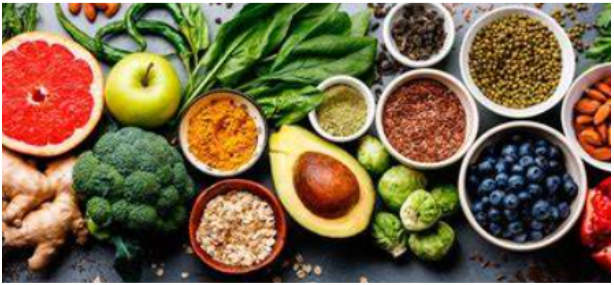
Introduction
During the holiday season and beyond, many individuals strive to make healthier dietary choices, often influenced by prevailing diet trends and endorsements from health gurus. However, not all foods touted as “healthy” deliver on their promises. In fact, some popular choices can actually contribute to a buildup of toxins in the body, leading to various health issues. This detailed exploration delves into seven such foods, debunking myths and revealing why they may not be the best options for maintaining health and wellness.
#1. Breads: The Hidden Effects on Blood Sugar
Bread, both white and whole grain, is a staple in many diets worldwide, prized for its convenience and perceived health benefits. However, these breads often have a high glycemic index, causing blood glucose levels to spike in a manner similar to ingesting pure sugar. Such spikes can lead to inflammation, which is a root cause of many chronic diseases, including diabetes, heart disease, and other degenerative conditions. Regular consumption of bread can contribute to insulin resistance, exacerbating health problems associated with metabolic syndrome (Ludwig, D. S., 2002).
#2. Pasta: Comfort Food with a Cost

Pasta, a beloved comfort food, is often considered healthy, especially when made from whole grains. Like bread, however, pasta can cause an immediate rise in blood glucose levels after consumption, presenting similar risks associated with high blood sugar. While it can be part of a balanced diet, overconsumption, particularly during festive seasons, can lead to adverse health impacts, especially for individuals at risk of diabetes and other metabolic disorders (Brand-Miller, J., 2003).
#3. Cereals: A Sugary Start to the Day
Cereals are a convenient breakfast option, and many varieties are marketed as healthy. However, most cereals can cause significant spikes in blood sugar. Furthermore, they are often found to contain glyphosate, an herbicide linked to hormonal disruptions and an increased cancer risk. The presence of such chemicals makes cereals far less healthy than advertised, and regular consumption could contribute to long-term health risks (Samsel, A., & Seneff, S., 2013).
#4. Rice: A Staple with Side Effects
Rice, particularly white rice, is a high-glycemic food that can significantly affect blood sugar levels. Conventionally grown rice may also contain high levels of pesticides, contributing to its toxicity. These pesticides can accumulate in the body over time, potentially leading to health issues such as nerve damage, reproductive disorders, and cancer. Choosing organic or thoroughly washed rice can reduce these risks, but moderation remains crucial (Consumer Reports, 2014).
#5. Canned Foods: Convenience at a Cost
Canned foods, including fruits and vegetables, are often laden with preservatives, notably high levels of sodium, which can lead to hypertension and other cardiovascular problems. Moreover, many cans are lined with bisphenol A (BPA), a chemical known to interfere with the endocrine system and mimic estrogenic effects. BPA exposure is linked to various health problems, including reproductive disorders and increased cancer risk, making canned foods less healthy than their fresh or frozen counterparts (Vandenberg, L. N., et al., 2007).
#6. Low-Fat Foods: The Misguided Health Halo
In an effort to reduce fat intake, many consumers turn to low-fat processed foods. However, these products often compensate for the loss of flavor due to reduced fat content by adding extra sugar or artificial sweeteners. These additives can disrupt metabolic health and increase the risk of diabetes and obesity. Furthermore, natural animal fats, which these products often replace, have been shown in numerous studies to be beneficial when consumed in moderation, contrary to longstanding myths about their health risks (Siri-Tarino, P. W., et al., 2010).
#7. Vegetable Oils: The Inflammatory Truth
The shift from animal-based fats to vegetable oils like corn oil, soy oil, and canola oil has been a significant dietary change over the past few decades. Promoted as healthier alternatives, these oils are now linked to an epidemic of inflammation-related diseases. Unlike animal fats, which have anti-inflammatory properties and have been part of the human diet for millennia without adverse effects, some vegetable oils can contribute to chronic inflammation, increasing the risk of diseases ranging from arthritis to heart disease (DiNicolantonio, J. J., & O’Keefe, J. H., 2018).
Conclusion: Making Informed Choices
Understanding the true impact of these so-called “healthy” foods is crucial for making informed dietary decisions, especially during the festive season when indulgence is common. Opting for genuinely healthy options and avoiding these potentially harmful foods can help prevent the accumulation of toxins and support your body’s overall well-being. Incorporating more whole, unprocessed foods into your meals and being mindful of the hidden risks in popular food choices not only contributes to a healthier lifestyle but also aligns with a more traditional and holistic understanding of nutrition.


